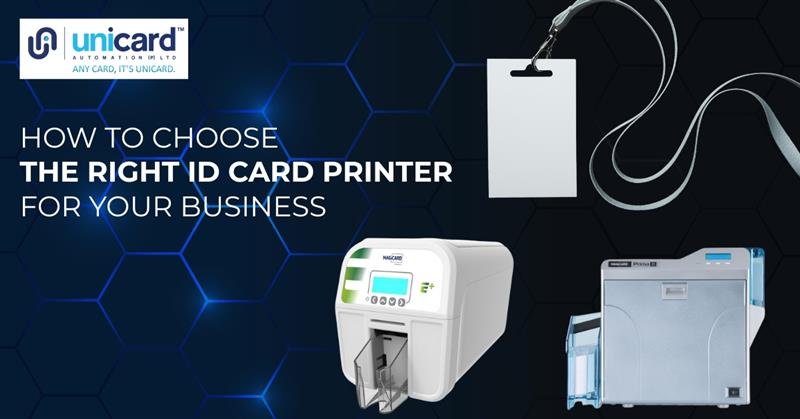Investing in an ID card printer is an important decision for any business that needs to issue staff IDs, access cards, visitor passes, or membership cards. With a wide range of models, technologies, and features available, selecting the right printer can feel overwhelming. However, by understanding your business needs and the available options, you can make a smart, cost-effective choice that serves you well in the long term.
This guide outlines the key factors to consider when choosing the right ID card printer for your business.
1. Determine Your Printing Volume
The first step is to assess how many ID cards you need to print daily, weekly, or monthly.
Low-volume printing (under 100 cards/month): Entry-level printers are sufficient, often more affordable and compact.
Medium-volume printing (100–1000 cards/month): Mid-range printers with faster print speeds and better durability are ideal.
High-volume printing (over 1000 cards/month): Industrial-grade printers like the Magicard Prima 8 are built for speed, heavy workloads, and long-term use.
If you anticipate business growth, consider choosing a scalable model that allows upgrades.
2. Single-Sided vs. Dual-Sided Printing
Do you need to print on one side or both sides of the card?
Single-sided printers are more affordable and work well for simple designs with only a photo, name, and logo.
Dual-sided printers print on both sides in one go, which is efficient for cards needing barcodes, terms of use, or contact details on the back.
Dual-sided models save time and eliminate the manual task of flipping cards during the printing process.
3. Printing Technology: Direct-to-Card vs. Retransfer
There are two main types of printing technologies:
Direct-to-Card (DTC): The most common and cost-effective option. It prints directly onto the card surface. Suitable for standard PVC cards but not ideal for uneven surfaces or smart cards.
Retransfer Printing: Offers superior image quality by first printing on a film, which is then fused onto the card. This method is best for printing on smart cards, access control cards, and cards with embedded chips.
If your business needs high-quality, edge-to-edge printing or uses smart cards, a retransfer printer is the better choice.
4. Security Features
Depending on your industry, security might be a top priority. Look for ID card printers that offer:
Holographic overlays or watermarks
UV printing
Smart card or magnetic stripe encoding
Custom lamination modules
These features are especially useful in government offices, financial institutions, and large enterprises where card security is critical.
5. Connectivity and Compatibility
Make sure the printer you choose is compatible with your existing systems.
USB and Ethernet connections are standard. Some newer models also offer Wi-Fi support for flexible placement.
Check that the printer supports your operating system (Windows, Mac, etc.) and ID design software.
Some advanced printers offer cloud connectivity for remote printing and management.
6. Ease of Use and Maintenance
A user-friendly interface, easy ribbon loading, and minimal maintenance can save valuable time. Some printers offer:
LED display screens
Status notifications
Easy card loading trays
Self-cleaning mechanisms
Choose a brand known for durability and customer support—established ID card manufacturers like Magicard, Evolis, and Fargo are trusted across industries.
Conclusion
Choosing the right ID card printer requires a thoughtful evaluation of your business’s printing volume, card design, security requirements, and budget. Whether you’re a small startup needing basic employee badges or a large enterprise looking for secure, high-quality ID solutions, there’s a printer to match your needs. Partnering with trusted ID card manufacturers and suppliers ensures product reliability, training support, and long-term value.
If you’re unsure where to start, consult with a professional ID card solutions provider to help guide you toward the most suitable printer for your operations.





